Crptocurrency
Panasonic, IBM partner with Constellation Network to debut its DoD-vetted “Blockchain of Blockchains” in Global Hackathon – BitcoinWorld
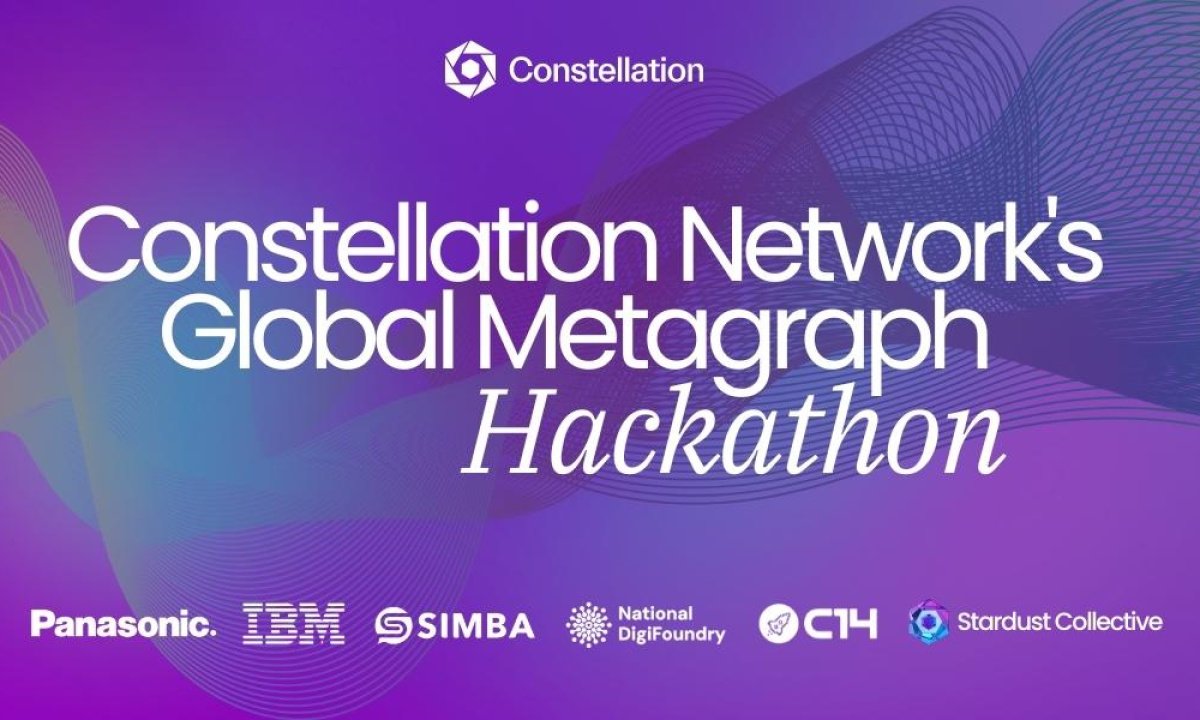
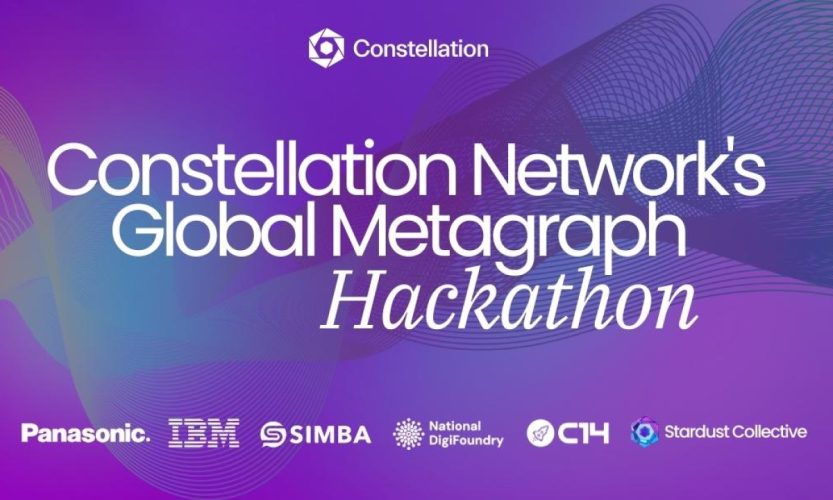
San Francisco, USA/California, July 15th, 2024, Chainwire
The doors are now open for Web3 and Web2 developers to build on Constellation Network’s long-awaited Hypergraph distributed ledger technology – in development for the past several years under various contracts with the US Department of Defense.
Constellation’s Global Metagraph Hackathon is a fully virtual event, free to enter, running from July 15th until September 9th, 2024. A total of $100,000 USD equivalent in $DAG (Constellation Network’s cryptocurrency) will be distributed to winners across several categories encompassing metagraph development and on-chain tooling, with the biggest single prize of $25,000 going to the most successful Metagraph.
With its Hackathon, Constellation officially unveils its “metagraph” application layer technology that runs on top of its Hypergraph global consensus layer to a worldwide audience. A metagraph can be any type of Layer 1 decentralized application (dApp) network or legacy Web2 network with its own internal business logic. Other blockchains can even be metagraphs on top of Constellation’s Hypergraph.
“Constellation’s Hypergraph is the blockchain of blockchains,” says Ben Jorgensen, CEO of Constellation Network. “The best way forward with Web3 and blockchain technology for all of us is interoperability and collaboration across chains and communities. There are many of us separately building these networks that can support things like decentralized AI, tokenized assets, IoT edge computing, decentralized finance and many other Web3 creations that seem to be popping up everywhere.”
“But the Hypergraph?” Ben continues, “This technology can link them all together, make everything interoperable, give them an underlying infrastructure that can secure their networks and validate their data flows.”
Panasonic and IBM have partnered with Constellation, along with SIMBA Chain, the C14 cryptocurrency on-ramping service, the Stardust Collective, and the National DigiFoundry, led by members from the US National Science Foundation, the US Space Force, and US Department of the Treasury, to support the development of innovative new metagraph technologies that interoperate in ways we have yet to see in the space.
Constellation’s fast and feeless Hypergraph network is uniquely designed using DAG-based infrastructure and microservices to create an underlying digital transfer layer with a flexible structure and application network overlay (metagraph). This facilitates interoperability and composability across both Web3 and legacy Web2 networks, offering network security, data validation, scalability, and simplified onboarding that businesses and governments need for adoption.
“Interoperability” is a buzz word in the Web3 space, it can be explained as all the networks that need to talk to other networks – like a smart factory or city where multiple networks of IoT devices communicate and share data, each with its own unique metagraph network communicating across the underlying Hypergraph.
“I’ve been waiting for this year since we started the company. It has always been our vision to have developer friendly and openly available blockchain tools for the masses. This hackathon marks the beginning of many expressions metagraphs have to offer and there seems to be no limit to the vast list of use cases. I am thankful for the team who made this possible as well as the partners who stepped up and helped make this a reality.”
– Benjamin Diggles, Chief Strategy Officer
Constellation’s metagraphs can work with any data type, interface directly with external data sources, accept existing Scala or Java libraries, give complete control over validation and consensus logic within the network, and scale to the level applications need through multilayered microservice architecture.
“With technology vetted by the rigorous standards of the US Department of Defense and with the collaboration of industry giants like Panasonic and IBM, this hackathon is more than a competition; it’s an invitation for developers worldwide to pioneer the next generation of decentralized applications and revolutionize the digital landscape.”
-Altif Brown, Global Community Architect
Judging
Hackathon submissions will be judged Sept 16-23, 2024, and winners will be announced on or around Sept. 30th. Hackathon judges include:
- Alan Boeme, former CTO of H&M, Coca-Cola and Procter & Gamble
- David Beck, Branch Chief, Space Industrial Base & Supply Chain, U.S. Space Force
- Kevin Jackson, Forward Edge AI Vice President, Digital Assets
- Dr. Dragan Boscovic, Clinical Professor, Director AZ Blockchain Applied Research Center
- Ben Jorgensen, Co-founder and CEO, Constellation Network
- Benjamin Diggles, Co-founder and Chief Strategy Officer, Constellation Network
- Altif Brown, Co-founder, Constellation Network, and Chair, Stardust Collective
- Alex Brandes, CTO, Constellation Network
- Joao Carvalho, Technical Product Manager, Constellation Network
- Dagnum PI, Head of Marketing, Stardust Collective
- Andrea Mullaney, Ecosystem Marketing, Stardust Collective, Web3 Advisor
- Martien Van Loo, Ecosystem Advisor, Stardust Collective, CEO and Co-Founder, Bundle It, Tech Stars Mentor
Users can visit Constellation’s Metagraph Hackathon site to register and find full event details and supporting materials.
Users can download the Stargazer Wallet to hold $DAG.
To find out more about Constellation Network: www.constellationnetwork.io
X/Twitter: https://x.com/Conste11ation and https://x.com/stardustco11ect
Developer Discord: https://discord.gg/9PhXJKeAWC
Telegram: https://t.me/constellationcommunity
Contact
Head of Marketing
Dagnum PI
Stardust Collective
dagnum@stardust-collective.org
Crptocurrency
U.S. Spot Ethereum ETFs Record $47.4M Net Outflows on September 3
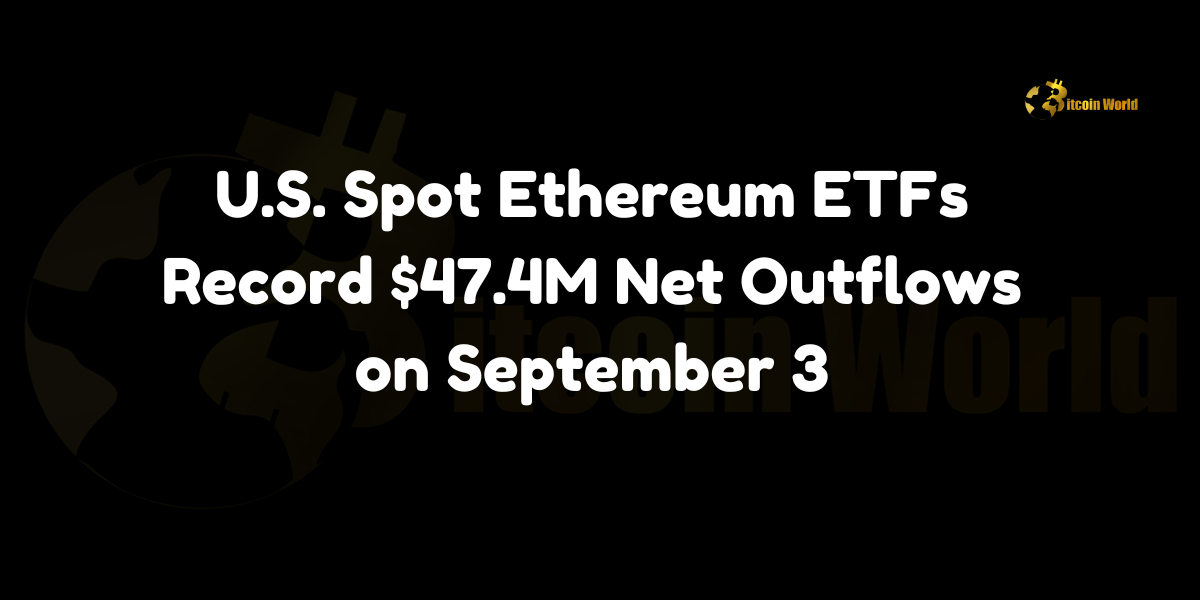
U.S. spot Ethereum ETFs net outflows amounted to $47.4 million on September 3, according to data from Farside Investors. This significant movement within the Ethereum-based exchange-traded funds (ETFs) sector reflects broader market volatility and shifting investor sentiment.
Key Details of September 3rd Outflows
- Grayscale’s ETHE Leads Outflows: Grayscale’s ETHE was the largest contributor to the total outflow, with a net loss of $52.3 million. This reflects growing caution among institutional investors regarding Ethereum’s near-term performance, particularly as the crypto market continues to face uncertainties.
- Fidelity’s FETH Sees Inflows: Despite the overall outflows, Fidelity’s FETH recorded a net inflow of $4.9 million. This suggests that some investors remain bullish on Ethereum, seeing potential for growth in the medium to long term.
- Other ETFs Remain Stable: The remaining U.S. spot Ethereum ETFs saw no significant net inflows or outflows, indicating relative stability in other funds despite the broader market movements.
Market Implications
The U.S. spot Ethereum ETFs net outflows reflect shifting dynamics in the market as investors navigate current price volatility and macroeconomic conditions:
- ETH Price Decline: Ethereum’s recent price movements, coupled with broader market uncertainty, may have triggered caution among institutional investors, leading to the substantial outflows from Grayscale’s ETHE.
- Continued Institutional Interest in FETH: Fidelity’s FETH gaining $4.9 million in inflows suggests that some institutional investors are still confident in Ethereum’s long-term potential, despite the overall outflows.
Conclusion
The U.S. spot Ethereum ETFs net outflows on September 3 show a divided market sentiment, with Grayscale’s ETHE losing significant ground while Fidelity’s FETH managed to attract new investments. As Ethereum continues to navigate market volatility, the movements within these ETFs will likely serve as indicators of broader institutional confidence in the digital asset.
To learn more about the innovative startups shaping the future of the crypto industry, explore our article on latest news, where we delve into the most promising ventures and their potential to disrupt traditional industries.
Disclaimer: The information provided is not trading advice, Bitcoinworld.co.in holds no liability for any investments made based on the information provided on this page. We strongly recommend independent research and/or consultation with a qualified professional before making any investment decisions.
Crptocurrency
D20 Labs Acquires Zynga’s Web3 Game Sugartown

D20 Labs acquires Sugartown, a Web3 game developed by mobile gaming giant Zynga, in a strategic move that highlights the growing importance of blockchain-based gaming. According to a press release on Game Developer, the sale has been completed, although the financial details of the transaction have not been disclosed. This acquisition marks a key development for both D20 Labs and the expanding Web3 gaming space.
What is Sugartown?
Sugartown is a Web3 game designed to integrate blockchain technology into mobile gaming, allowing players to interact with decentralized assets and in-game economies. As Web3 gaming continues to evolve, games like Sugartown aim to capitalize on the growing interest in decentralized finance (DeFi) and NFTs within interactive entertainment.
- Blockchain Integration: Sugartown incorporates blockchain technology, giving players control over in-game assets, which can be traded or sold on decentralized platforms.
- Web3 Gaming Evolution: The game represents Zynga’s initial foray into Web3, reflecting its ambition to explore the convergence of mobile gaming and decentralized finance.
D20 Labs Expands Web3 Footprint
D20 Labs, a Web3 development studio, has positioned itself as a key player in the blockchain gaming space with this acquisition. The company’s decision to acquire Sugartown further strengthens its portfolio and commitment to expanding in the Web3 gaming sector.
- Strategic Acquisition: With the acquisition of Sugartown, D20 Labs aims to leverage the game’s potential and integrate it more deeply into the Web3 ecosystem. This move aligns with their broader goal of developing innovative gaming experiences that incorporate decentralized technologies.
- Growth in Web3 Gaming: As the Web3 gaming industry continues to grow, D20 Labs is likely to use Sugartown as a cornerstone for building a more interactive and financially inclusive gaming environment.
The Future of Sugartown
With D20 Labs acquiring Sugartown, the game is set to undergo further development and integration into the broader Web3 landscape. As D20 Labs continues to explore the possibilities of decentralized gaming, Sugartown is expected to evolve and offer players more robust blockchain features, including decentralized asset ownership and new gameplay mechanics.
Conclusion
The D20 Labs acquires Sugartown transaction marks a significant step in the Web3 gaming world. While the financial details remain undisclosed, the acquisition signals D20 Labs’ ambition to push the boundaries of decentralized gaming, and Sugartown will likely play a central role in that strategy.
To learn more about the innovative startups shaping the future of the crypto industry, explore our article on latest news, where we delve into the most promising ventures and their potential to disrupt traditional industries.
Disclaimer: The information provided is not trading advice, Bitcoinworld.co.in holds no liability for any investments made based on the information provided on this page. We strongly recommend independent research and/or consultation with a qualified professional before making any investment decisions.
Crptocurrency
Ethereum On-Chain Lending Markets Face $436M in Liquidations for August, Second-Largest in History

Ethereum on-chain lending markets liquidations August reached a staggering $436 million, marking the second-largest liquidation volume in history, as reported by The Block. This significant surge in liquidations came as the price of ETH dropped by 22% over the course of the month. Decentralized lending protocol Aave bore the brunt of the liquidations, accounting for $289 million, or 66% of the total, underscoring the volatility and risks inherent in decentralized finance (DeFi) lending markets.
Reasons Behind the Surge in Liquidations
August’s massive liquidation event on Ethereum’s lending platforms was driven by several key factors:
- ETH Price Decline: A 22% decline in ETH’s price in August triggered automatic liquidations across DeFi lending markets. Borrowers who had used ETH as collateral were unable to meet their debt obligations, leading to a wave of liquidations to cover outstanding loans.
- Market Volatility: The broader crypto market also experienced heightened volatility, which exacerbated the liquidation events. As ETH prices fell, borrowers found themselves undercollateralized, triggering liquidation bots to sell off their collateral.
Aave’s Role in the Liquidation Wave
Aave, one of the largest decentralized crypto lending protocols on Ethereum, was at the center of August’s liquidation wave:
- $289 Million Liquidations on Aave: Aave accounted for 66% of all liquidations in August, totaling $289 million. As one of the most widely used lending platforms, Aave’s users were particularly exposed to the market downturn, leading to significant sell-offs as the price of ETH dropped.
- Lending Risk Exposure: The large volume of liquidations on Aave highlights the risks associated with DeFi lending protocols, where the rapid decline in asset prices can lead to cascading sell-offs as borrowers struggle to maintain sufficient collateral.
Second-Largest Liquidation Volume in History
The Ethereum on-chain lending markets liquidations August event stands as the second-largest recorded in the history of decentralized finance. The magnitude of these liquidations reflects the vulnerabilities that still exist within DeFi protocols, where rapid price swings can lead to substantial losses for both borrowers and lending platforms.
- Historical Context: The only liquidation event larger than August’s occurred during a previous market crash when similar conditions led to widespread liquidations across Ethereum-based lending platforms. These events highlight the challenges DeFi protocols face in managing risk during periods of high volatility.
Implications for DeFi Lending Markets
The sharp increase in liquidations during August has several implications for the DeFi space:
- Risk Management: DeFi protocols will need to continue improving their risk management frameworks to prevent large-scale liquidations in the future. This could include more robust collateral requirements, enhanced liquidation processes, and better tools for borrowers to manage their loans during periods of market stress.
- Borrower Caution: Borrowers in DeFi markets will need to be more cautious about how they use collateral in volatile market conditions. Using ETH or other volatile assets as collateral can lead to rapid liquidation during market downturns, as seen in August.
- Market Stabilization: While liquidations are a natural part of the DeFi ecosystem, large liquidation events like the one in August can cause market instability. Ensuring that these events are managed smoothly will be critical for the long-term sustainability of DeFi lending platforms.
Conclusion
The Ethereum on-chain lending markets liquidations August event has cemented itself as one of the largest in DeFi history, with $436 million liquidated due to a 22% decline in ETH prices. Aave, as a leading lending protocol, bore the majority of these liquidations, accounting for 66% of the total. As DeFi continues to grow, both protocols and users must navigate the risks of market volatility, and this event underscores the importance of robust risk management in decentralized lending.
To learn more about the innovative startups shaping the future of the crypto industry, explore our article on latest news, where we delve into the most promising ventures and their potential to disrupt traditional industries.
Disclaimer: The information provided is not trading advice, Bitcoinworld.co.in holds no liability for any investments made based on the information provided on this page. We strongly recommend independent research and/or consultation with a qualified professional before making any investment decisions.
-

 Startup Stories11 months ago
Startup Stories11 months agoWhy Millennials, GenZs Are Riding The Investment Tech Wave In India
-
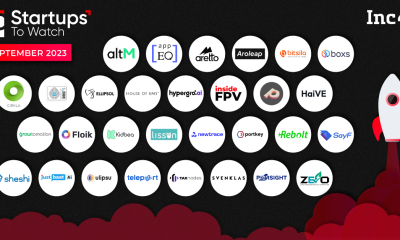
 Startup Stories11 months ago
Startup Stories11 months agoStartups That Caught Our Eyes In September 2023
-

 Startup Stories11 months ago
Startup Stories11 months agoHow Raaho Is Using Tech To Transform India’s Fragmented Commercial Trucking
-

 Startup Stories10 months ago
Startup Stories10 months agoMeet The 10 Indian Startup Gems In The Indian Jewellery Industry’s Crown
-

 Crptocurrency6 months ago
Crptocurrency6 months agoLither is Making Crypto Safe, Fun, and Profitable for Everyone!
-
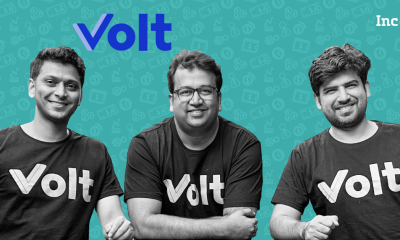
 Startup Stories11 months ago
Startup Stories11 months agoHow Volt Money Is Unlocking The Value Of Mutual Funds With Secured Lending
-

 E-commerce11 months ago
E-commerce11 months agoTop Online Couponing Trends To Watch Out For In 2016
-
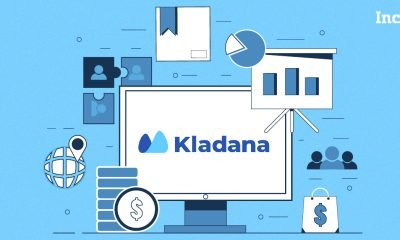
 Startup Stories11 months ago
Startup Stories11 months agoWhy Moscow-Based Kladana Considers Indian SME Sector As The Next Big Market For Cloud Computing




